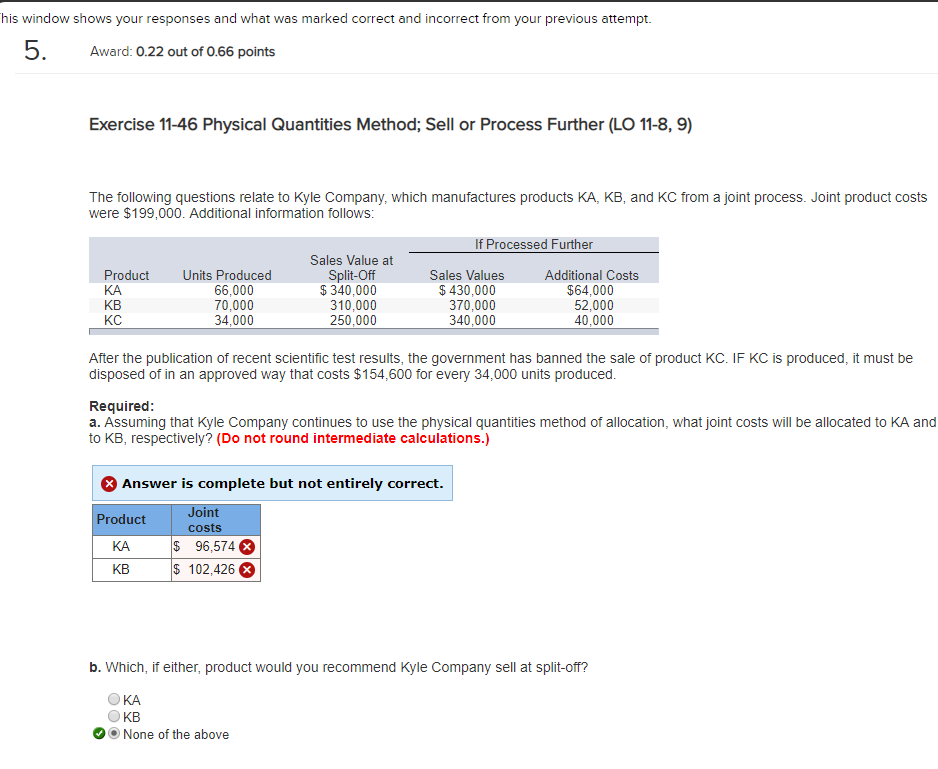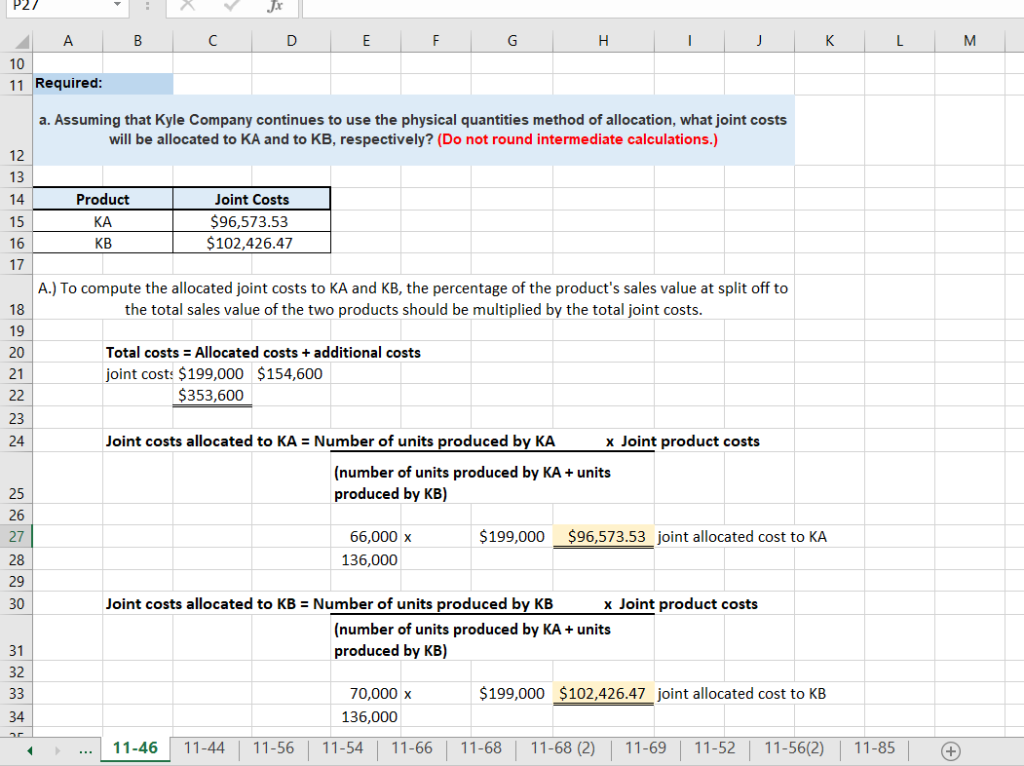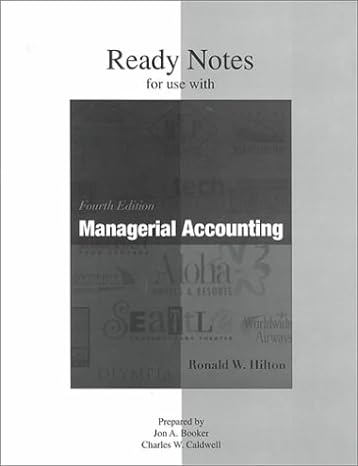Question
Exercise 11-46 Physical Quantities Method; Sell or Process Further (LO 11-8, 9) (I included my work on Excel, please let me know where I messed
Exercise 11-46 Physical Quantities Method; Sell or Process Further (LO 11-8, 9)
(I included my work on Excel, please let me know where I messed up and give step by step calculations)
The following questions relate to Kyle Company, which manufactures products KA, KB, and KC from a joint process. Joint product costs were $199,000. Additional information follows:
| If Processed Further | ||||||||||
| Product | Units Produced | Sales Value at Split-Off | Sales Values | Additional Costs | ||||||
| KA | 66,000 | $ | 340,000 | $ | 430,000 | $ | 64,000 | |||
| KB | 70,000 | 310,000 | 370,000 | 52,000 | ||||||
| KC | 34,000 | 250,000 | 340,000 | 40,000 | ||||||
|
| ||||||||||
After the publication of recent scientific test results, the government has banned the sale of product KC. IF KC is produced, it must be disposed of in an approved way that costs $154,600 for every 34,000 units produced.
Required:
a. Assuming that Kyle Company continues to use the physical quantities method of allocation, what joint costs will be allocated to KA and to KB, respectively? (Do not round intermediate calculations.)
b. Which, if either, product would you recommend Kyle Company sell at split-off?
| KA | |
| KB | |
| None of the above |


his window shows your responses and what was marked correct and incorrect from your previous attempt. . Award: 0.22 out of 0.66 points Exercise 11-46 Physical Quantities Method; Sell or Process Further (LO 11-8, 9) The following questions relate to Kyle Company, which manufactures products KA, KB, and KC from a joint process. Joint product costs were $199,000. Additional information follows If Processed Further Product KA KB KC Sales Value at Split-Off $ 340,000 310,000 250,000 Units Produced Sales Values 66,000 70,000 34,000 $430,000 370,000 340,000 Additional Costs $64,000 52,000 40,000 After the publication of recent scientific test results, the government has banned the sale of product KC. IF KC is produced, it must be disposed of in an approved way that costs $154,600 for every 34,000 units produced Required a. Assuming that Kyle Company continues to use the physical quantities method of allocation, what joint costs will be allocated to KA and to KB, respectively? (Do not round intermediate calculations.) Answer is complete but not entirely correct Product KA KB oint costs $ 96,574 $ 102,426 b. Which, if either, product would you recommend Kyle Company sell at split-off? O KA None of the above P27 10 11 Required a. Assuming that Kyle Company continues to use the physical quantities method of allocation, what joint costs will be allocated to KA and to KB, respectively? (Do not round intermediate calculations.) 12 14 15 16 17 Product KA KB Joint Costs 96,573.53 102,426.47 A.) To compute the allocated joint costs to KA and KB, the percentage of the product's sales value at split off to 18 the total sales value of the two products should be multiplied by the total joint costs. 20 Total costs Allocated costs +additional costs oint cost $199,000 $154,600 $353,600 23 24 Joint costs allocated to KA Number of units produced by KAx Joint product costs (number of units produced by KA+units produced by KB 25 26 27 28 29 30 199,000 $96,573.53 joint allocated cost to KA 66,000x 136,000 Joint costs allocated to KB Number of units produced by KB x Joint product costs (number of units produced by KA+units produced by KB 32 $199,000 S102,426.47 joint allocated cost to KB 70,000x 136,000 34 11.46 11-44 | 11.56 | 11.54 | 11-66 | 11-68 11-68 (2) | 11-69 | 11.52 | 11.56(2) | 11.85 |
Step by Step Solution
There are 3 Steps involved in it
Step: 1

Get Instant Access to Expert-Tailored Solutions
See step-by-step solutions with expert insights and AI powered tools for academic success
Step: 2

Step: 3

Ace Your Homework with AI
Get the answers you need in no time with our AI-driven, step-by-step assistance
Get Started


